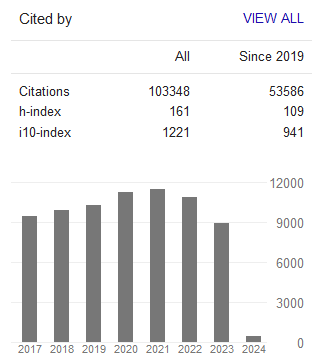The Chinese “Togetherness-Separation” Paradox: An Analytical Approach to Understanding Chinese People’s Behavior and Its Implication to International Cooperation
- Miguel Cerna
Abstract
This investigation takes an explanatory approach to Chinese paradoxical behavior and sheds light upon one the most recent findings regarding, what I called, the “togetherness-separation” paradox of the Chinese society. It includes data collected in Mainland China between 2010 and 2012 from Chinese and non-Chinese professionals working in Shanghai, Guangzhou, Hangzhou and Beijing in different fields including international trade, sourcing, logistics, compliance, quality control, supply chain consultancy, diplomacy and education. Respondents were presented with twenty-six aspects, divided in three categories, seemingly affecting cross-cultural interactions at work including Attitude (determined by values): Friendliness, being active and positive, responsibility, good demeanor, sociability, willingness to learn, flexibility, sense of humor and being humble; Education and skills (determined by education systems): Academic background, foreign language capability, mother tong, creativity, school attended, credentials, interests, communication skills, good command of English and intellectual curiosity; and Physical aspects (determined by race and clothing): Age, general appearance, gender, height, skin color, clothing, and health appearance.
The differences between Chinese and Non-Chinese managers found in this investigation, are explained based on literature review as well as on an in-depth interviews with Porf. RongYao Chen expert in Chinese organizational cultural and Porf. of Business Administration at Donghua University, Shanghai campus. Cluster analysis shows that non-Chinese professional share a common mindset regarding what they consider most and least important to carry out working cross-cultural interactions, while the Chinese professionals, as a group, show to be dispersed.- Full Text:
 PDF
PDF
- DOI:10.5539/ijbm.v10n12p194
Journal Metrics
Google-based Impact Factor (2023): 0.86
h-index(2023): 152
i10-index(2023): 1168

Index
- Academic Journals Database
- AIDEA list (Italian Academy of Business Administration)
- ANVUR (Italian National Agency for the Evaluation of Universities and Research Institutes)
- Berkeley Library
- CNKI Scholar
- COPAC
- EBSCOhost
- Electronic Journals Library
- Elektronische Zeitschriftenbibliothek (EZB)
- EuroPub Database
- Excellence in Research for Australia (ERA)
- Genamics JournalSeek
- GETIT@YALE (Yale University Library)
- IBZ Online
- JournalTOCs
- Library and Archives Canada
- LOCKSS
- MIAR
- National Library of Australia
- Norwegian Centre for Research Data (NSD)
- PKP Open Archives Harvester
- Publons
- Qualis/CAPES
- RePEc
- ROAD
- Scilit
- SHERPA/RoMEO
- Standard Periodical Directory
- Universe Digital Library
- UoS Library
- WorldCat
- ZBW-German National Library of Economics
Contact
- Stephen LeeEditorial Assistant
- ijbm@ccsenet.org
